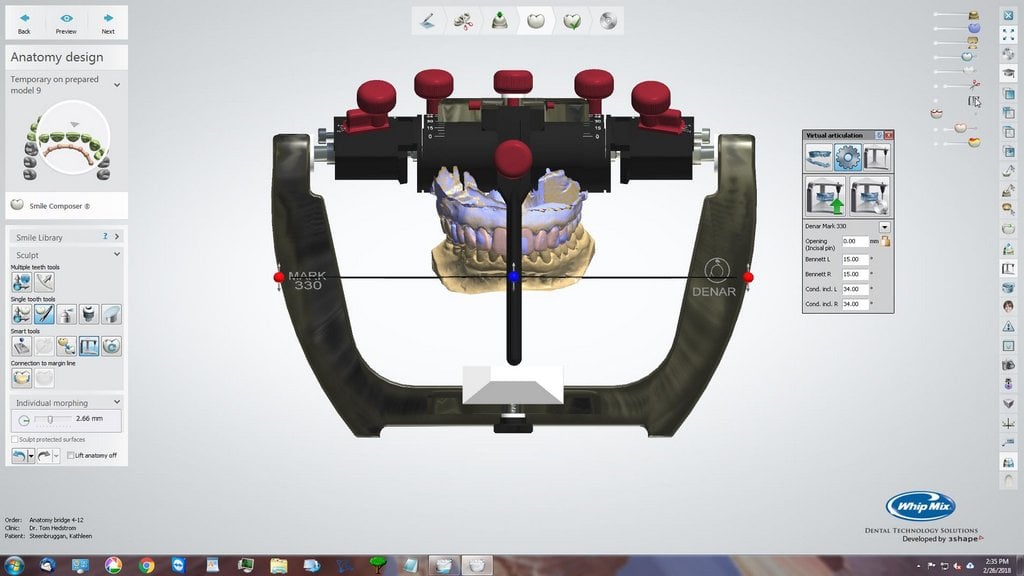 On a daily basis our customer service & technical support teams field a number of calls about our products. So we thought we would share the answers to some of those questions. Let’s start with Whip Mix Articulators:
On a daily basis our customer service & technical support teams field a number of calls about our products. So we thought we would share the answers to some of those questions. Let’s start with Whip Mix Articulators:
Here are the answers to 5 frequently asked questions about Whip Mix articulators:
1) Are Whip Mix Articulators interchangeable and why is having an articulator that is interchangeable important to me?
Yes. With the exception of the original Model #8500 Articulator, all Whip Mix semi-adjustable articulators feature the “ACCUMOUNT” system of interchangeability, which make them interchangeable within like series. The accuracy of interchangeability is within 101 microns.
Cost savings. There is no need to purchase several articulators for your practice/laboratory. Using an articulator that is interchangeable allows you to exchange mounted casts between like articulators without loss of accuracy. Only the mounted casts need to be sent between the doctor’s office and the laboratory. There is an additional savings in shipping cost for the weight of the articulator being sent back and forth between the doctor’s office and the laboratory. Finally you would eliminate repairs that are a result of the articulator being damage in transit between the office and laboratory.
2) Do you have an accessory that allows me to make a custom incisal guide table that's also reusable?
Yes, the Dovetail Incisal Block. During the wax-up procedure on the mounted stone casts, the laboratory technician or dentist may have to move the casts through frequent excursive movements on the articulator to check the positioning of the wax to ensure deal occlusion is achieved. During this procedure wearing away of the stone casts is likely. To prevent this unwanted wear, a custom incisal guide table made out of auto polymerizing acrylic resin should be fabricated either on the flat plastic Incisal Guide Table that comes with the articulator (but is disposable) or on our metal Dovetail Incisal Block (which you can reuse).
3) Can I convert my articulator over to the magnetic system? If so, how?
Many semi-adjustable articulators on the market can be retrofitted to use the Quick Mount Magnetic System. To see a full list of articulators that can be retrofitted, please click here.
Converting your articulator to the QuickMount Magnetic System can easily be done by following the detailed instructions in the technical support section of whipmix.com.
4) Do I need to use a face-bow to use an articulator?
No you do not. However, is recommended to provide as much patient information as possible when reproducing the patient's occlusion. Taking a face-bow is not difficult or time consuming, as see here. Another option, if not taking a face-bow, would be to use a mounting platform to get casts at Bonwills Equilateral Triangle.
5) How can I tell if my articulator is out of alignment?
Fortunately Whip Mix Articulators are extremely durable. With normal care and maintenance you will probably never need to have it re-calibrated. However, in the unfortunate event that it gets damaged due to being dropped or knocked off the workbench, you may need to send it back for re-calibration.
A quick and easy way to check for damage would be to do the following: look for any parts on the articulator that appear bent (i.e. brass face-bow mounting pins, incisal guide pin, or incisal guide pin screw). Set the right and left side shift guides to the 10 degree mark on the Model #2340, 3000, and 4000 Series Articulators, and set the side shift guide to the zero mark on the Model #2240 Articulator; release the centric latch and elastic straps if available on your model; check to see if there is any side-to-side movement of the upper member. If you detect any movement it is possible that damage has occurred.
Another way to verify if damage has occurred is to remove the plastic incisal guide table from the articulator. With the side shift guides locked in place as described above, lock the centric latch to secure the upper member. Then, lower the incisal pin slightly and secure it. Check to see if the incisal guide pin will slide freely through the slot on the lower member of the articulator. If the pin hits the lower member or rubs the inside of the slot, this may be an indication that the articulator is out of alignment. You can also use the new Whip Mix Verification Gage System. The verification gage system allows you to verify the height for flatness and allows you to verify and calibrate the lateral and anterior/posterior.











.png)

Leave a comment